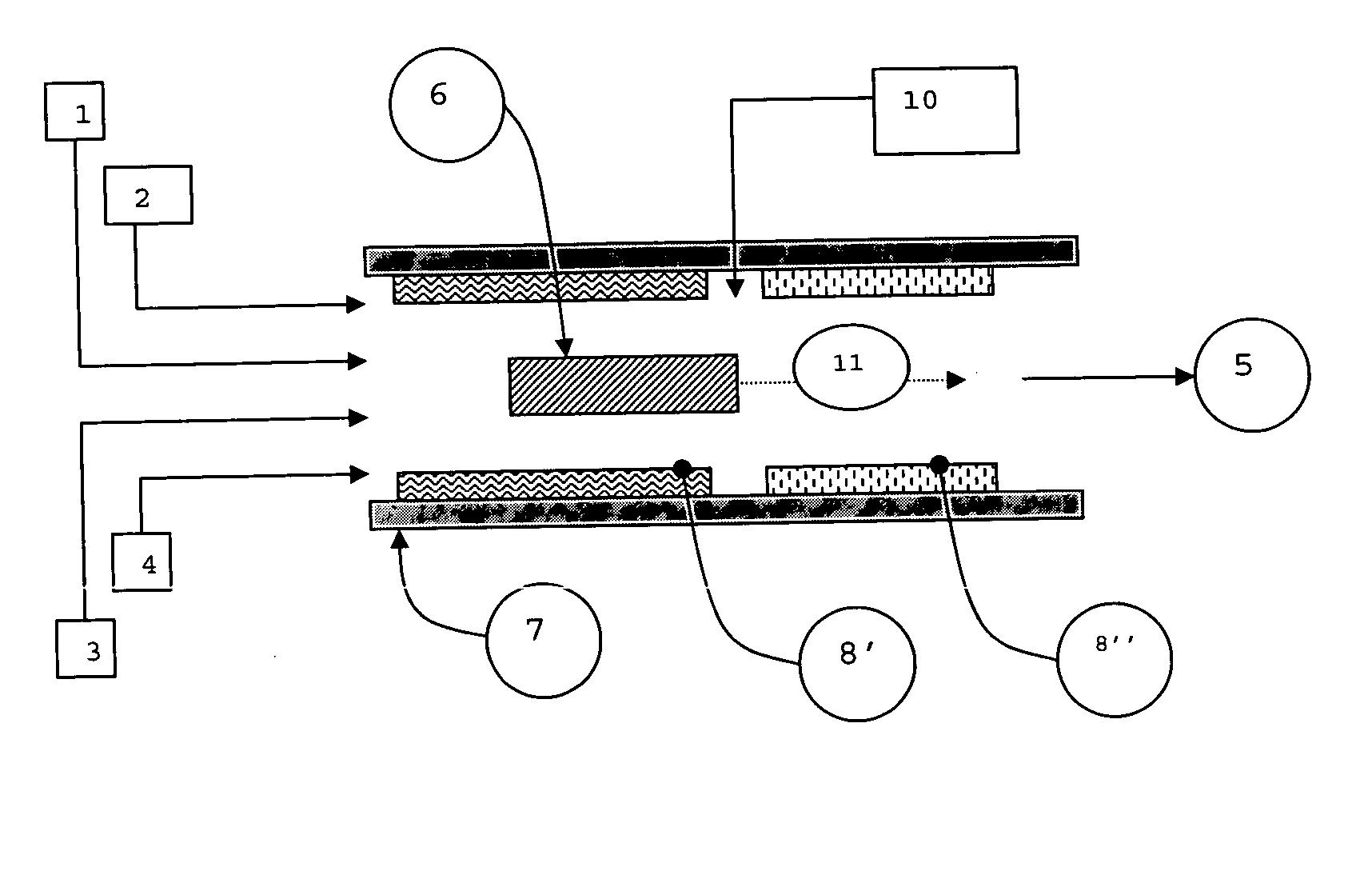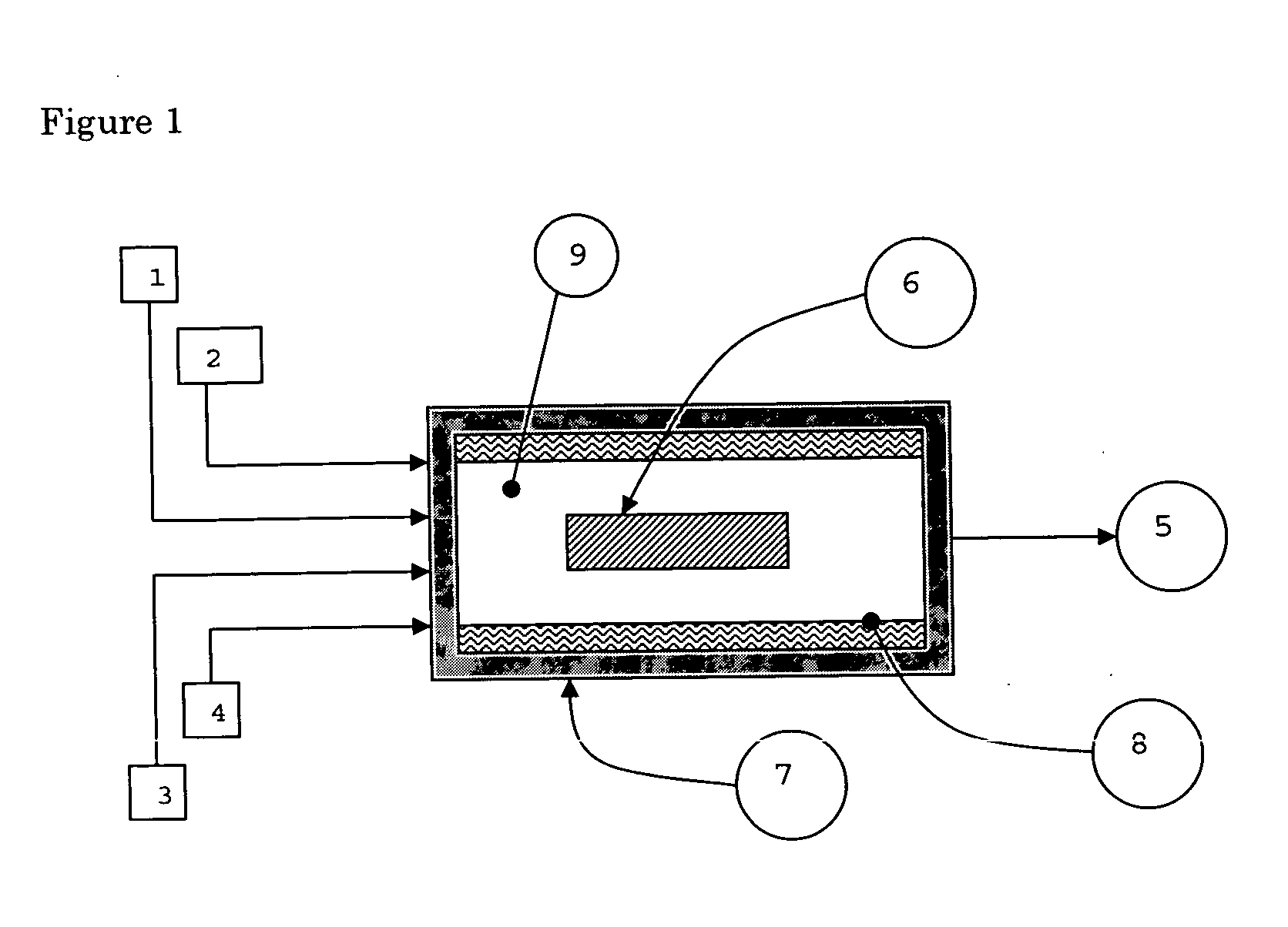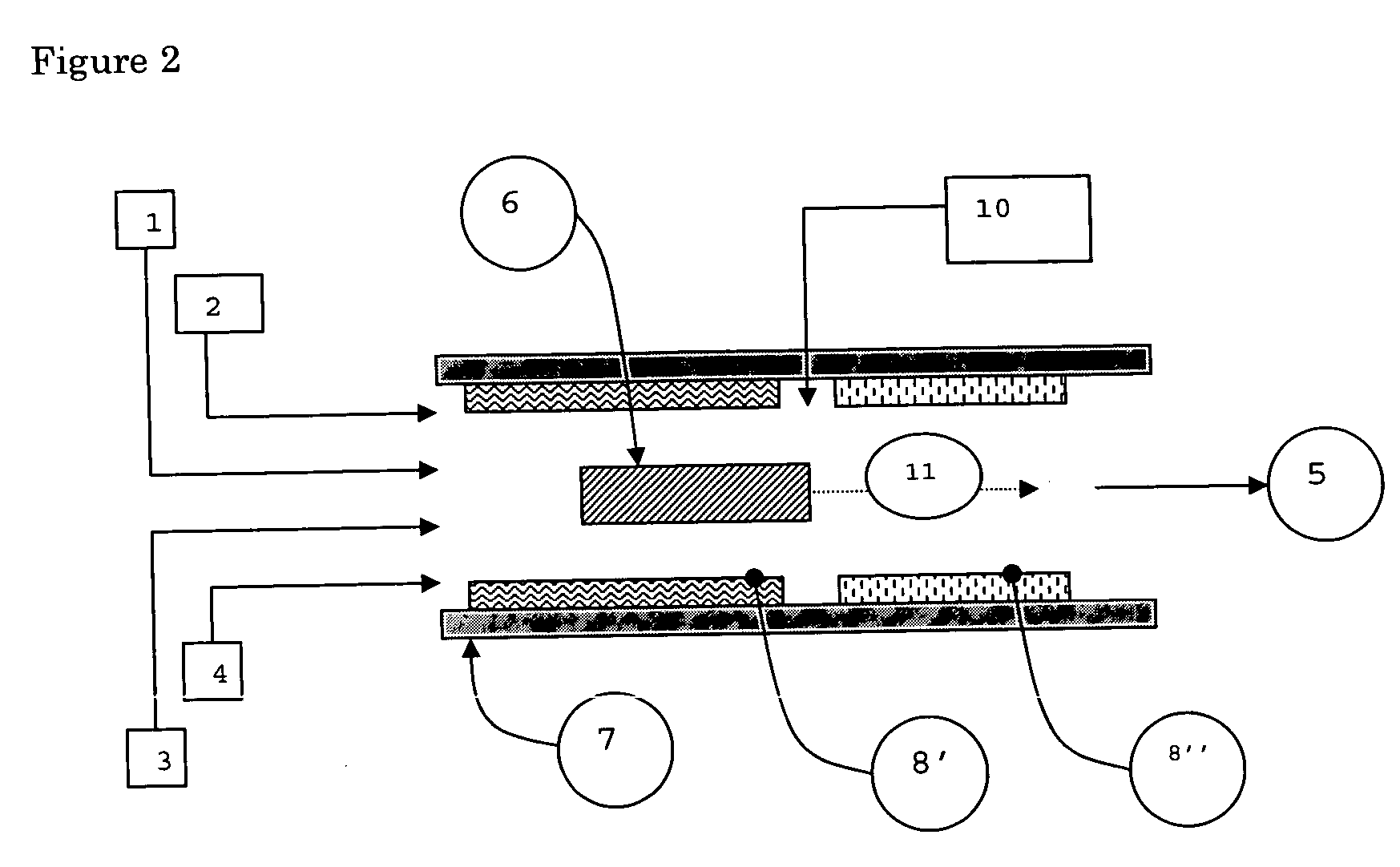Nanotube/metal substrate composites and methods for producing such composites
a technology of metal substrate and composites, which is applied in the direction of indirect heat exchangers, laminated elements, lighting and heating apparatus, etc., can solve the problems of nanotube production processes, time-consuming and expensive, decomposing or altering nanotubes, etc., and achieves the specific energy capacity of carbon nanotubes higher than expected, the effect of reducing the stoichiometric of intercalation
- Summary
- Abstract
- Description
- Claims
- Application Information
AI Technical Summary
Benefits of technology
Problems solved by technology
Method used
Image
Examples
example 1
[0081] The alloys CDA 704 (91% Cu, ˜1.5% Fe, ˜5.5% Ni), CDA 706 (88% Cu, ˜1.5% Fe, ˜10% Ni), Hastelloy G-30 (43% Ni, ˜30% Cr, ˜15% Fe, 5% Mo), Incoloy MA956 (74% Fe, 5% Al, 20% Cr, 0.5% Y2O3), and Hastelloy C-276 (57% Ni, ˜16% Cr, ˜6% Fe, 16% Mo) were pickled using methods adapted from ASTM method G1-03. The metals were then introduced into a CVD furnace. The material was heated to and held at 900 C for 2.5 hrs while flowing combinations of ethylene (20 sccm), methane (1000 sccm), and hydrogen (500 sccm) gases over the substrates. FIG. 4 depicts the metals alloy substrate 12 before and after carbon nanotube coating. The carbon nanotubes grow on the upper face 13 and also on the edges 14. The bottom surface of the coupon will also be coated to some degree.
example 2
[0082] The alloy CDA 704 (91% Cu, ˜1.5% Fe, ˜5.5% Ni) was pickled using methods adapted from ASTM method G1-03. The material was heated to and held at 900 C for 2.5 hrs while flowing combinations of ethylene (20 sccm), methane (1000 sccm), and hydrogen (500 sccm) gases over the substrate. The surface was then analyzed using SEM. FIG. 5 is a 35000× SEM image of nanotubes produced during the process. Some nanotubes are longer than 2 micrometers in length, with diameters of about 10 to 100 nm.
example 3
[0083] An Incoloy MA 956 alloy (74% Fe, 5% Al, 20% Cr, and 0.5% Y2O3) was pickled using methods adapted from ASTM method G1-03. The material was heated to and held at 900 C for 2.5 hrs while flowing combinations of ethylene (20 sccm), methane (1000 sccm), and hydrogen (500 sccm) gases over the substrate. The surface was then analyzed using SEM. FIG. 6 is a 35000× SEM image of nanotubes produced during the process. Some nanotubes are longer than 2 micrometers in length, with diameters of about 10 to 50 nm.
PUM
| Property | Measurement | Unit |
|---|---|---|
| outer diameter | aaaaa | aaaaa |
| temperature | aaaaa | aaaaa |
| hydraulic diameter | aaaaa | aaaaa |
Abstract
Description
Claims
Application Information
 Login to View More
Login to View More - R&D
- Intellectual Property
- Life Sciences
- Materials
- Tech Scout
- Unparalleled Data Quality
- Higher Quality Content
- 60% Fewer Hallucinations
Browse by: Latest US Patents, China's latest patents, Technical Efficacy Thesaurus, Application Domain, Technology Topic, Popular Technical Reports.
© 2025 PatSnap. All rights reserved.Legal|Privacy policy|Modern Slavery Act Transparency Statement|Sitemap|About US| Contact US: help@patsnap.com



